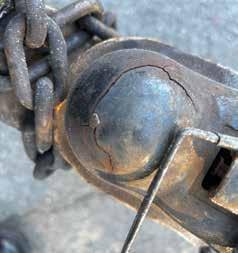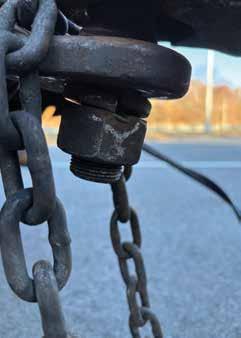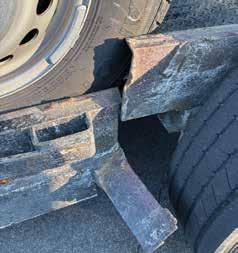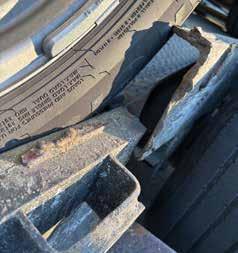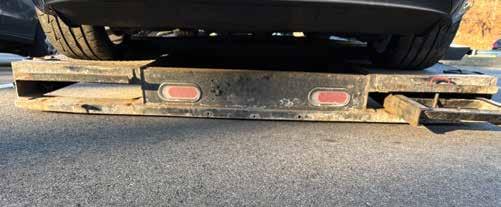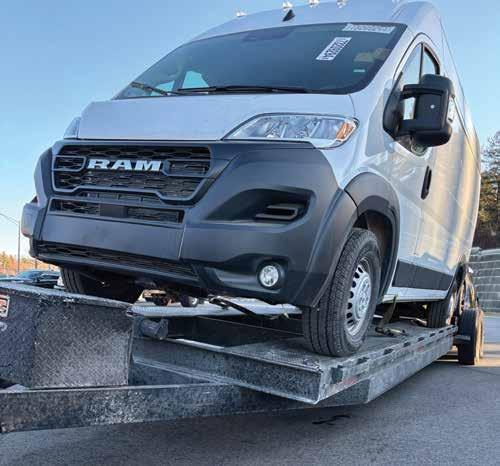
4 minute read
Making A Difference
By Paul Lemieux, Connecticut Department of Motor Vehicles
As an officer or inspector conducting commercial motor vehicle (CMV) safety inspections, do you ever wonder if all your efforts make a difference on our roadways? There were times when I would have that same thought – until recently.
On Jan. 15 at 8 a.m., I conducted overweight enforcement on I-95 in Greenwich, Connecticut. I was posted on the southbound side and saw a “hotshot” CMV – a pickup truck and trailer combination, which doesn’t require a commercial driver’s license.
The trailer had a full-size Dodge Ram van on the front and a Tesla passenger car on the rear. The trailer was leaning sharply to the left side. The truck had only single tires on the drive axle, and it appeared to be overweight. The trailer had dual axles, and the tires looked flat. I pulled out after the vehicle to make a stop. I was traveling behind it before making the stop and saw the rear bottom portion of the trailer bouncing off the surface of the roadway, causing sparks and spreading debris. I made the stop just before the New York state line and escorted the driver to the I-95 northbound Connecticut weigh station for weighing and inspection.
The vehicle was not marked with the required motor carrier name or USDOT number. I interviewed the driver and found that he was in a commerce move and was hired to transport the two vehicles from Connecticut to New York. The carrier he was hired by was registered in Florida.
I completed a Level I Inspection on the vehicle and driver. I quickly determined that the reason the trailer bounced off the roadway was that the trailer’s frame was broken and separated on the left side. The right side was cracked but still partially attached. I weighed it and found it 4,660 pounds overweight for the gross weight in combination.
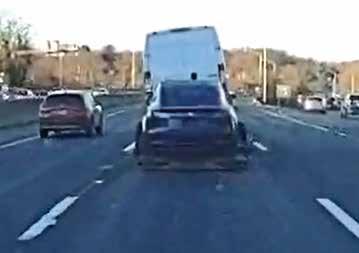
In my Level I inspection, I found and documented 42 violations on the driver and the vehicle. The following out-of-service (OOS) violations were found:
• § 395.8(a)(1): No record of duty status
• § 392.9a(a)(1): No operating authority
• § 393.75(c): Bald tire on tow vehicle
• § 396.3(a)(1): > 20% brakes OOS – the trailer had no operable brakes
• § 393.71(h): Ball on hitch was loose and shifted
• § 393.43(d): No emergency brake system on trailer
• § 393.75(a)(3): Three tires on the trailer had < 50% psi max pressure
• § 393.75(a)(1): One tire on trailer had steel cord showing on tread surface
• § 393.201(a): Frame cracked/separated on left and right sides
• § 393.9(a): Trailer had no operable stop signals
• § 393.9(a): Trailer had no operable turn signals
• § 393.71(h): Cracked hitch system where ball locks into coupler
The driver, truck and trailer were all placed OOS. The transport vehicle and the vehicles that comprised the load were all towed from the scene. The driver was interviewed further and stated that he thought something was wrong with his vehicle, but he did not stop to check it.
I have been conducting CMV inspections for the past 13 years as a member of the Connecticut Department of Motor Vehicle Commercial Safety Division West Truck Team. I must say, this vehicle was in the most unsafe condition I have ever seen.
The driver was young and inexperienced in his duties. There is no excuse for him to have been driving this unsafe vehicle. Some of the blame should be directed at the motor carrier for not training the employee on how to conduct a pre-trip inspection and operate safely. As CMV inspectors, we are not only responsible for roadside enforcement but also must educate motor carriers on their responsibilities to operate safely within the regulations and applicable state laws.
If this motor carrier had better understood its responsibilities and liabilities, this driver and vehicle would never have been allowed to leave the yard. I can honestly say I made a difference that day on our roadways.

